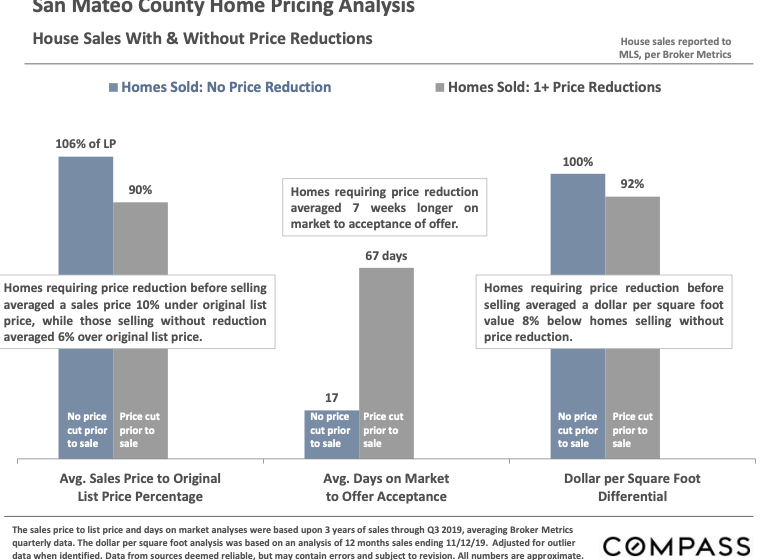The Dangers of Overpricing in the San Mateo County Real Estate Market
While overpricing almost always has negative ramifications for sellers (lower sales prices than if priced correctly to begin with), it can provide opportunities for buyers who carefully track price reductions and react accordingly. Such buyers will typically face less competition from other buyers – often no competition, which eliminates any need for overbidding – and allows for more aggressive negotiation of the purchase price. Across Bay Area markets, price reduced properties consistently sell for lower average dollar per square foot values than homes that sell quickly.
The Truth about Home Pricing
Ironically, instead of getting more money… [Over-pricing] usually stigmatizes a property and reduces the eventual sale price to less than it would have been with more realistic pricing.”
House Selling for Dummies
Fair market value is that price a qualified, reasonably knowledgeable buyer is willing to pay, which a seller, not under duress, is willing to accept after the home has been properly exposed to the market.
Neither agents nor sellers determine market value: Only the market – willing and able buyers — determines market value. Agent and seller work together to create a plan – which includes pricing, preparation and marketing — to maximize the conditions that reliably achieve the highest possible sales price.
The vast majority of buyers will not make offers on homes they consider significantly overpriced. Either they don’t want to waste their time, or are uncomfortable with possibly “offending” the seller. In any case, they simply move on to other listings.
Well-priced homes create a sense of urgency in the buyer/broker communities to act quickly with strong, clean offers, and often lead to competitive bidding between buyers – which is the most likely way to increase sales price.
Overpricing wastes the optimum moment of buyer and broker attention: when it first comes on the market. This moment cannot be recaptured.
Overpriced homes kill any sense of buyer urgency and take much longer to sell, which then significantly reduces value in buyers’ minds: “There must be something wrong with it if it hasn’t sold by now.” It almost always eliminates the possibility of competitive bidding.
Overpricing helps sell competitive properties, since they stand out as good values in comparison.
If a listing has inadvertently been overpriced, the sooner it is recognized as such and the price reduced, the smaller the negative impact. Price reductions must be big enough to regain the attention of buyers and their agents – typically, at least 5%.
In order to win the listing, some agents suggest a list price considerably higher than what they believe market conditions and comparable sales justify—because they believe this is what the seller wants to hear. This is called “buying the listing” and is a violation of the fiduciary duty of honesty that an agent owes their client.
- Price it right to begin with.
- Prepare the home to show in its best possible light.
- Implement the most comprehensive marketing plan possible.
- Hire an agent who knows how to negotiate effectively on your behalf, and manage the
disclosure and due diligence processes.
The difference can add up to tens or even hundreds of thousands of dollars.
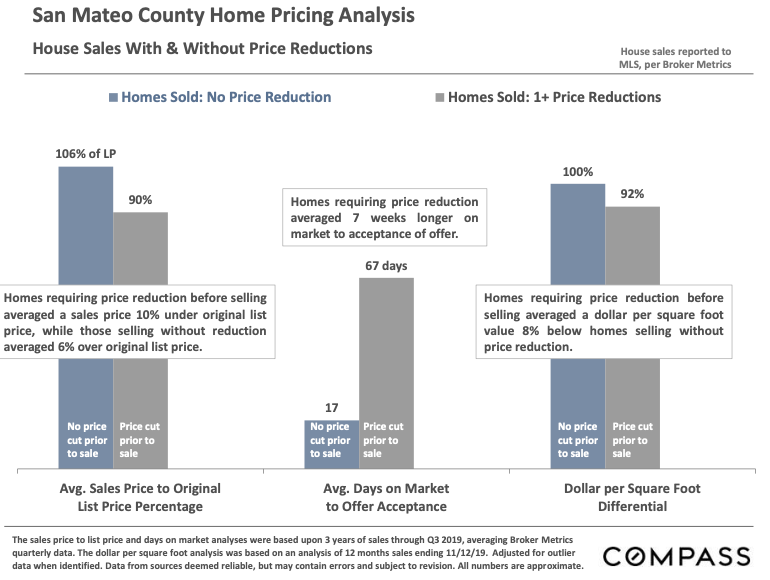
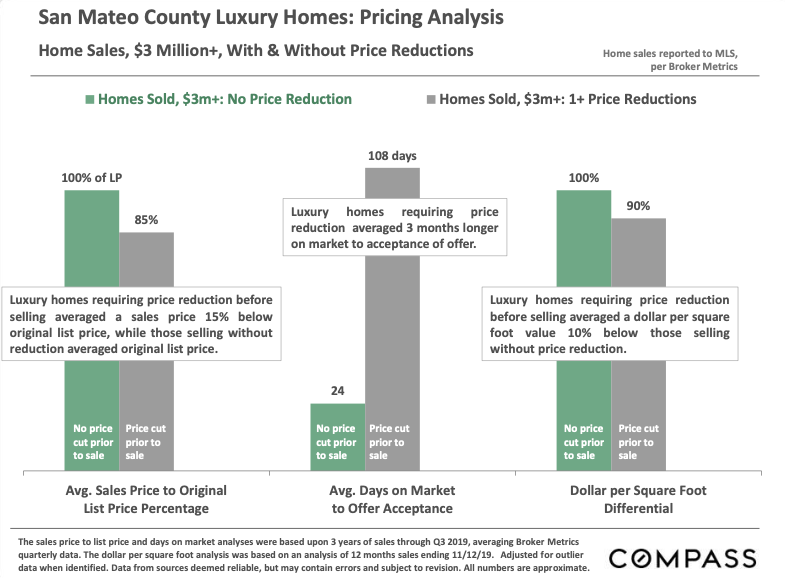
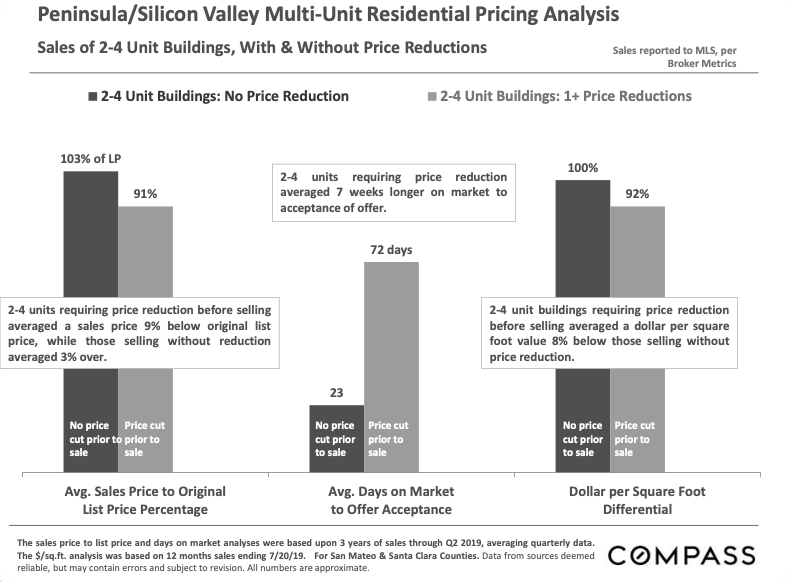

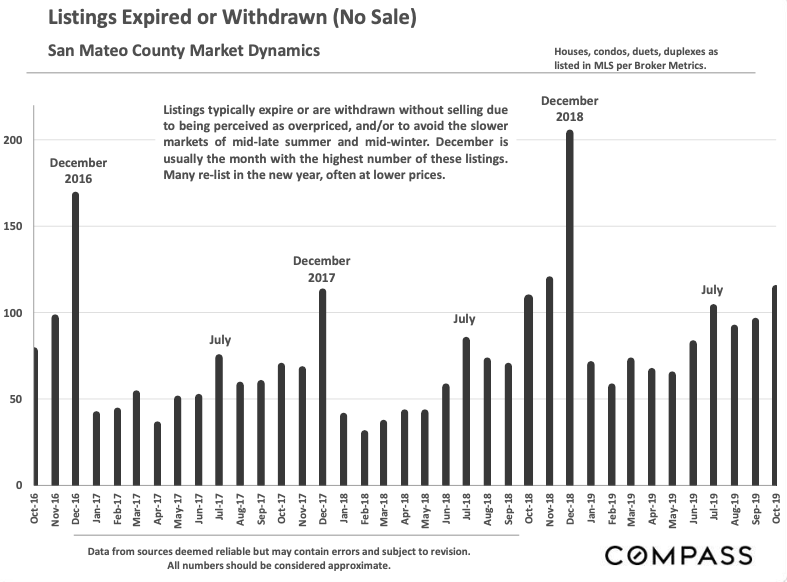
Compass is a real estate broker licensed by the State of California, DRE 01527235. Equal Housing Opportunity. This report has been prepared solely for information purposes. The information herein is based on or derived from information generally available to the public and/or from sources believed to be reliable. No representation or warranty can be given with respect to the accuracy or completeness of the information. Compass disclaims any and all liability relating to this report, including without limitation any express or implied representations or warranties for statements contained in, and omissions from, the report. Nothing contained herein is intended to be or should be read as any regulatory, legal, tax, accounting or other advice and Compass does not provide such advice. All opinions are subject to change without notice. Compass makes no representation regarding the accuracy of any statements regarding any references to the laws, statutes or regulations of any state are those of the author(s). Past performance is no guarantee of future results.


